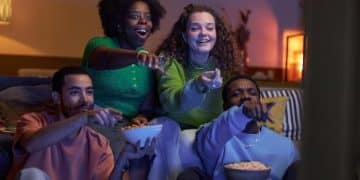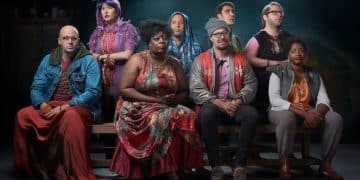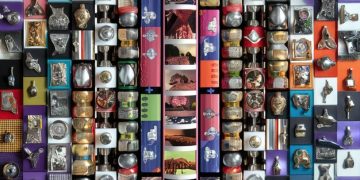The Crown Season 6: Fact vs. Fiction – A Critical Review
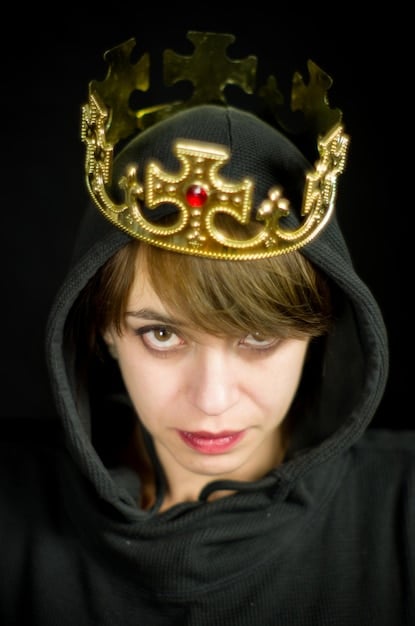
‘The Crown’ Season 6: Fact vs. Fiction – A Critical Review of the Royal Drama delves into the historical accuracy of the series, comparing dramatic portrayals with real-life events. This analysis examines the final season’s depiction of the British Royal Family.
Few television series have captured the world’s attention quite like ‘The Crown.’ As the final season unfolds, viewers are once again captivated by the dramatized portrayal of the British Royal Family. However, the line between fact and fiction often blurs, leading to questions about the accuracy of the events depicted. This article offers ‘The Crown’ Season 6: Fact vs. Fiction – A Critical Review of the Royal Drama, examining key storylines and comparing them with historical records.
‘The Crown’ Season 6: Fact vs. Fiction – Setting the Stage
‘The Crown’ has always taken creative liberties in its storytelling, and Season 6 is no exception. Before diving into specifics, it’s crucial to understand that the series aims to capture the emotional truth of events, rather than providing a strictly documentary account. The dramatization serves to fill in gaps where historical records are sparse, offering interpretations of private conversations and personal motivations.
The final season covers significant events in the late 1990s and early 2000s, including Princess Diana’s tragic death, the subsequent grief, and the evolving relationships within the royal family. While these events are well-documented, the series often presents a particular viewpoint.
Diana’s Final Days: Accuracy and Sensitivity
The portrayal of Princess Diana’s final days has been one of the most talked-about aspects of the season. The series aims to handle this sensitive topic with care, but questions remain about how accurately it depicts the events leading up to her death and its immediate aftermath.
- The Paparazzi Chase: The intensity of the paparazzi’s pursuit of Diana is a well-known fact, but the series dramatizes specific interactions and moments that may or may not have occurred exactly as shown.
- Dodi Fayed’s Role: The series delves into the relationship between Diana and Dodi Fayed, offering a narrative interpretation of their connection.
- The Royal Family’s Reaction: The depiction of the Royal Family’s response to Diana’s death has sparked debate, with some critics questioning the accuracy of their portrayed reactions.
Here, we navigate the historical complexities and dramatic interpretations that define ‘The Crown’ Season 6.
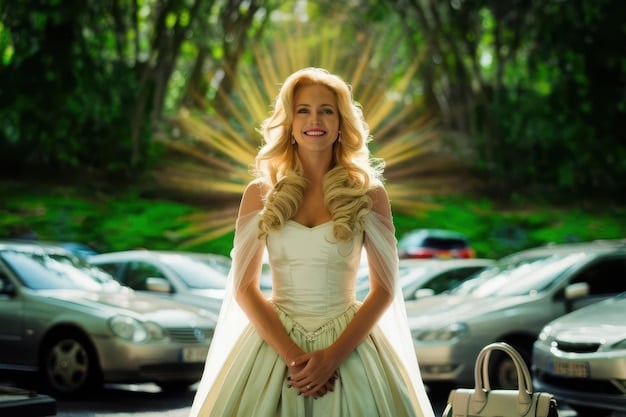
Prince William and Harry: Growing Up in the Spotlight
Season 6 explores the challenges faced by Prince William and Prince Harry as they navigate their adolescence in the public eye. The series delves into their experiences with grief, their evolving relationships, and their struggles to find their own identities within the confines of royal life.
This part of the season raises questions about how accurately ‘The Crown’ captures the emotional toll of losing a parent at a young age and the pressures of growing up under constant scrutiny.
William’s University Years: Fact vs. Drama
Prince William’s time at the University of St Andrews is depicted in the series, highlighting his attempts to lead a normal life while still fulfilling his royal duties. This section invites us to consider what this really looked like for him.
- Meeting Kate Middleton: One of the key storylines involves William’s meeting and developing relationship with Kate Middleton. How accurately does the series portray their early interactions and budding romance?
- Balancing Privacy and Duty: The challenges William faced in maintaining a degree of privacy while still performing his royal duties are explored. Did the series capture the essence of this struggle?
- The Media Pressure: The constant media attention and its impact on William’s life during his university years are portrayed. To what extent does the series reflect the reality of this pressure?
The narrative dives deep into how the spotlight shaped Prince William and Harry’s formative years.
Queen Elizabeth II: Reign and Reflection
Imelda Staunton continues to embody Queen Elizabeth II, providing a nuanced portrayal of her reign during a period of significant change and challenges. The series explores her reflections on past decisions, her evolving relationship with her family, and her commitment to the monarchy.
Season 6 delves into the complexities of leadership and legacy, particularly through the lens of the Queen’s experiences. Examining how these scenes of the Queen were put to screen alongside the facts brings a great level of clarity to ‘The Crown’ Season 6: Fact vs. Fiction – A Critical Review of the Royal Drama.
The Monarchy’s Future: Adapting to Change
The series touches upon the debates surrounding the future of the monarchy and the need for adaptation in the face of changing public attitudes. This theme has particular resonance as the Royal Family continues to evolve in the 21st century.
- Public Opinion: The series depicts shifts in public opinion toward the monarchy and the pressures this placed on the Queen and her family.
- Succession Debates: Discussions around succession and the roles of different family members are explored.
- Modernization Efforts: The series portrays attempts to modernize the monarchy and make it more relevant to contemporary society.
Now with new insight, how does this inform our understanding of ‘The Crown’ and Queen Elizabeth?
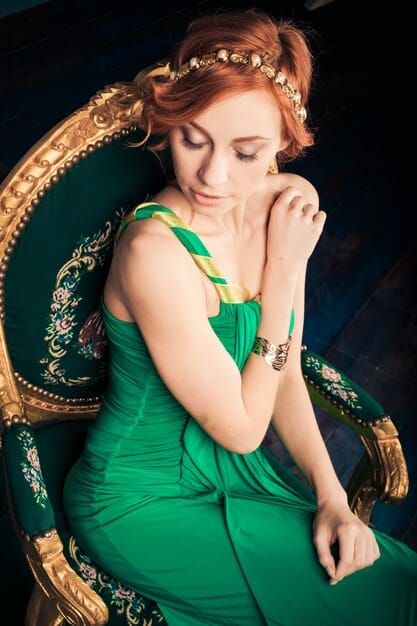
‘The Crown’ Season 6: Fact vs. Fiction – Other Royal Relationships
Beyond the central figures, Season 6 also examines various other royal relationships, including those of Princess Margaret and Prince Charles. These storylines offer further insights into the dynamics within the family and the pressures they faced.
The accuracy of these portrayals is also subject to scrutiny, as the series takes creative liberties in depicting personal interactions and motivations.
Princess Margaret: A Supporting Role, But Still Impactful
Princess Margaret’s character continues to be a significant presence in Season 6, portraying her struggles with illness and her evolving role within the royal family. The show attempts to balance drama and respect in its characterization.
- Her Health Battles: The show addresses Princess Margaret’s health issues and how they affected her life and relationships.
- Her Counsel to the Queen: While in support, how much influence did Princess Margaret really have?
- Her Social Circle: The inner circle around Princess Margaret is looked at in season six, and how they shaped the end of her life.
These characters provide balance, but are they all fact or fiction?
Critical Reception: What Viewers Are Saying
Season 6 of ‘The Crown’ has received mixed reviews, with some critics praising its performances and production values, while others have raised concerns about its historical accuracy and emotional sensitivity. Discussions around ‘The Crown’ Season 6: Fact vs. Fiction – A Critical Review of the Royal Drama are common amongst reviewers and viewers alike.
The final season has sparked considerable debate and discussion among viewers. Some have praised the series for its engaging storytelling and compelling performances, while others have criticized its departure from historical accuracy and its handling of sensitive topics.
Balancing Entertainment and Historical Truth
The central challenge for ‘The Crown’ has always been balancing entertainment with historical truth. While the series aims to provide a compelling narrative, it inevitably takes liberties with facts and timelines.
- Dramatization vs. Documentation: The series is a dramatization, not a documentary, and viewers should approach it with that understanding.
- Artistic License: The writers and producers have taken artistic license in interpreting events and conversations.
- Historical Context: While the series is not always strictly accurate, it does provide a broad historical context for the events it depicts.
The show’s final season begs the question, did the show tell it like it was?
| Key Point | Brief Description |
|---|---|
| 🤔 Diana’s Final Days | Examines the accuracy of events leading to Princess Diana’s death. |
| 👑 Queen Elizabeth’s Reflection | Investigates the Queen’s evolving role and commitment to the monarchy. |
| 👦 William and Harry | Explores their adolescent years and how the pressures of royal life shaped them. |
Frequently Asked Questions
The season handles this event with care, portraying the events leading up to her death and the immediate aftermath. The depiction aims to capture the emotional impact on the royal family and the public.
The series delves into his university years at St Andrews, highlighting his relationship with Kate Middleton and his struggles to balance privacy with his royal duties. It reveals the pressures of media scrutiny.
Imelda Staunton’s portrayal continues to offer a nuanced view of the Queen’s reign. The show touches on her reflections on past decisions, her family relationships, and commitment to the monarchy.
Yes, Princess Margaret and Prince Charles also have supporting roles. These storylines give further insight into the complex challenges within the Royal Family.
The central debate revolves around the balance between entertainment and historical accuracy. While the series aims to be engaging, it uses artistic license to fill gaps where facts are uncertain.
Conclusion
Ultimately, ‘The Crown’ Season 6: Fact vs. Fiction – A Critical Review of the Royal Drama reveals a blend of historical events and creative interpretation that has captivated audiences. It’s important for viewers to approach the series with an understanding of its dramatized nature and to seek out additional information to form their own informed opinions about the events depicted.

